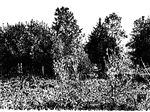Clipart tagged: ‘stock’
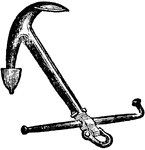
Admiralty's Anchor
"The Admiralty anchor differs only from the ordinary anchor in having a nut, a, worked on the square,…

Anchor
"The vertical or supporting beam of the A. is the shank, B; at the upper end of it is the ring, r; and…

Birds
An illustration of two birds. On the left side is a European wood pigeon and on the right is a stock-dove.

Block Shears
"Block shears act with additional leverage, and can consequently be used for rather thicker metal, the…

Bower Anchor
"A, is the cathead; B, the fish davit; C, and E, bollards; D, the bill-board. The anchor is held in…

Cleft-Grafting
"Cleft-grafting is another method in common use. The stock a is cleft down from the horizontal cut d,…
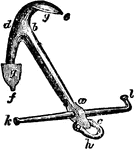
Common Anchor
"The shank is the straight part, ab; the square, ac, is that part of the shank to which the stock and…

Common Elder
"Flower-stock, Leaves, and cluster of Berries of the Common Elder (Sambucus nigra)." — Chambers'…
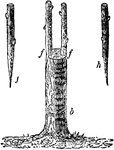
Crown-Grafting
"Crown-grafting is preferable to cleft-grafting, inasmuch as it leaves no open spaces in the wood. The…

Cutting Pliers
"Cutting pliers and cutting nippers have a pair of knife edges so arranged as to work exactly opposite…

Double-Acting Stock
"The softening of leather is helped and rendered thorough by working them for some time in the stocks…
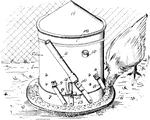
Automatic Stock and Poultry Feeder
This is a simple agricultural machine which dispenses common food for poultry and similar stock.

Field Gun Carriage
"Field-gun Carriage. A, stock. B, cheek. a, lunette; b, trail-plate; c, c, pointing-rings; d, handle;…
Parts of the Gun
"Gun. A, breech; B, barrel; C, band; D, breech-block; E, butt; F, butt- or heel-plate; G, front sight…

Martin's Anchor
"The anchor is represented in the position in which it lies on the ground just before taking hold. The…
Present Arms
"With the right hand carry the piece in front of the center of the body, barrel to the rear and vertical,…

Ratchet Brace
"A ratchet brace is a powerful instrument, and carries in itself the screw for obtaining the requisite…

Rodger's Anchor
"The stock is of iron in large as well as small anchors, and is made with a mortice, to fit over the…

Root-Grafting
"Fahlias and paeonies may be grafted by inserting young shoots into the neck of one of the fleshy roots…

Root-Grafting
"In the case of large woody plants thus worked the grafted roots, after the operation is completed,…
Sheet-metal Shears
"The ordinary sheet-metal shears merely resemble very powerful scissors, and, their action being quite…

Shield-Budding
"The simplest and most generally practised form of budding is that called Shield budding or T-budding.…
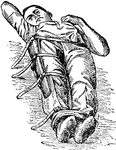
Military Splint
"The carbine boot may be used to advantage in splinting fractures of the thigh and leg." — Moss, 1914

Military Splint
"The carbine boot may be used to advantage in splinting fractures of the thigh and leg." — Moss, 1914

Stock
"The wood-worker's main stand-by for boring is the stock or brace and set of bits." — Encyclopedia…
Stock, right side view
"The parts are the butt, A; small, B; magazine well, C; barrel bed, D; air chamber, E, which reduces…
Stock, top view
"The parts are the butt, A; small, B; magazine well, C; barrel bed, D; air chamber, E, which reduces…

Ten Week Stock
Ten week stock and intermediate stock are the common name of matthiola incana annua. It is an annual,…

Trotman's Anchor
"The stock is of iron, similar to the Admiralty anchor; the shank is of rectangular section, somewhat…
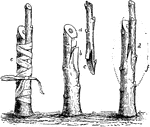
Whip-Grafting
"Whip-grafting or tongue-grafting is the most usual mode of performing the operation. The stock is headed…


